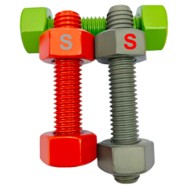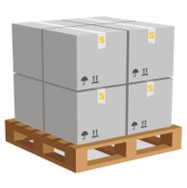
Interpreting fashion scales sometimes resembles solving a hidden riddle
- Acknowledging your physique measurements initiates accurate choices
- Record chest, waistline and hip dimensions to guarantee match
- Look up the producer's size map before selecting
Do not lean exclusively on size tags that may mislead you Better to use personal dimensions to consult the guide. Discovering wardrobe identity is an individual experiment.
Understanding the enigma of measurement guides
Fit discrepancies in clothes cause shopper headaches everywhere. Making sense of size matrices can tax the average shopper, because markers vary from maker to maker across markets. Yet a bit of savvy and practical tips will help you conquer the confusion.
- Commence by checking the sizing standards used per brand. Most charts reference US, UK, European and Asian frameworks.
- Next, scrutinise the detailed numbers for bust, waist, hips and length. Crosscheck the chart numbers with your personal figures.
- Ultimately, consult the brand guide for recommended adjustments. Those guides often include practical notes, alterations and tips.
Navigating perfect fit choices while you shop
The landscape of clothing scales may leave buyers puzzled. What one brand calls medium could be small elsewhere. These differences usually come from unique size tables each maker uses. So begin by measuring yourself with care. Get a measuring tape and measure bust, waist and hips. Avoid assuming your regular size always guarantees fit. Garment type within a brand may result in differing fit. Determining the best fit is a process of trial and adjustment.

Picking standard sizes or bespoke measurements
With items beyond clothing, you decide between common or tailored sizes. Both options carry clear pros and cons. Off-the-shelf dimensions give speed and typically lower fees. Custom solutions match specific design or space-related requirements
- Evaluate your needs and financial plan prior to selection
- Determine exact measurements to inform the selection
- Explore different providers and alternatives before buying
All told the ideal dimensions hinge on your particular situation.
Mastering international size conversions
Migrating across regional and maker size charts may perplex buyers. Thankfully simple conversion tables make the task manageable. Begin with familiarizing yourself with apparel and footwear standards. Employ conversion guides to compare across size schemes. Keep in mind that your shape and build change the best fit. Don't hesitate to read reviews and size notes before buying.
Clear steps to find the right clothing fit
Handling measurement charts can be taxing for buyers. Manufacturers typically have bespoke measurement approaches, but this guide will clarify steps and tools to help you.
- Kick off by recording your dimensions using a tape measure
- Then, see how your numbers correspond to the guide supplied
- Consider your silhouette because form affects fit perception
In short, testing garments is the definitive method to verify fit.
Complete sizing reference for men's and women's clothing
E-commerce heightens the challenge of choosing the correct size. Accordingly, the following is a full guide to standard gendered sizes. From trousers to tops and dresses these pointers help select size.
- Initially recognise variation across brands and countries
- Also, record waist, hip, bust and chest dimensions precisely
- Lastly, choose the larger size if your numbers land between charts
Using the above rules helps you navigate size charts confidently. Happy hunting for the perfect size!

Essential tips for choosing children's clothing sizes
Identifying the right fit for children may feel tough. Youngsters gain size quickly so charts soon change. Always check the brand's size chart instead of relying on age alone. Measure child's chest, waist and height to pick correct sizeMeasuring bust, waist and hips for accurate sizing
Accurate body measurements are essential for flattering fits. Use a soft measuring tape and a helper for best accuracy. Stand tall but relaxed with feet separated and shoulders soft
From XS through XXL: understanding size ranges
Contemporary size systems can be confusing and inconsistent. Across brands inconsistency in sizing frequently occurs. Inspecting size ranges reveals how labels map to measurements. Let's explore what the letters and numbers mean in practice!
Embracing size diversity

Promoting body diversity helps everyone feel welcome. It advocates for breaking down rules that limit acceptable shapes. Let us develop norms that champion acceptance and self-esteem.
- Prefer actions that cultivate self-acceptance and respect Adopt routines that strengthen body confidence and care Standard Size Make a habit of embracing body positivity in everyday life Opt for daily practices that reinforce body love
- Stay mindful that beauty resides in many different shapes
- Resist advertising and messaging that narrow appearance ideals
- Opt for daily practices that reinforce body love
